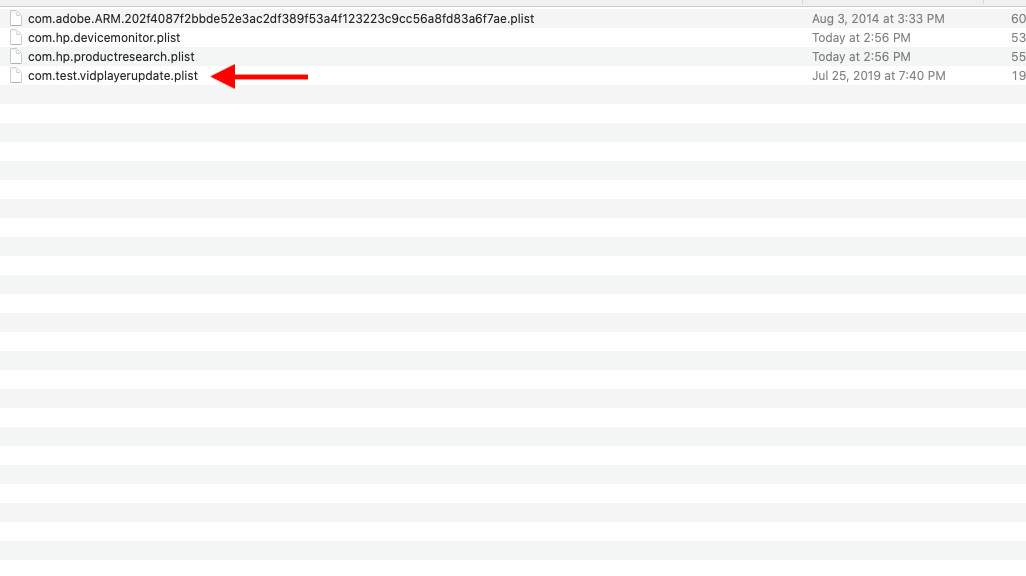First, ensure you have a reliable backup of your Mac, in case something should go wrong with continued troubleshooting. To learn how to do that, please read Back up your Mac with Time Machine.
- A backup is a fundamental prerequisite regardless of whatever method you may choose uninstall adware, and would apply even if your Mac were running perfectly well. Do not overlook this fundamental requirement. It's important.
Next: This step is optional, but will preclude any related inability to use your Mac due to the effects of that recurring process. Restart in "Safe Mode", and log in: Use safe mode to isolate issues with your Mac. Starting in Safe Mode takes longer than usual so let it finish. The resource-demanding process will not appear while you are using your Mac in that mode.
The following files and / or folders need to be deleted while using your Mac in "Safe Mode":
~/Library/LaunchAgents:

Drag that file to the Trash. You may be asked to authenticate. Confirm it is no longer present in that folder. Leave all the others alone for now.
Nothing needs to be deleted from the other two folders.
Next: open Safari and select the Safari menu > Preferences... > Extensions. If you see any Extensions that you do not recognize or understand, simply click the Uninstall button and they will be gone. No Safari Extensions are required for normal operation. Then, select the General pane and review your Homepage selection. Repeat those equivalent actions for any other browser you may use (Firefox for example).
There may also be an app associated with that process in your Mac's Applications folder. Open it and examine its contents. Any unwanted or mysterious app icons should be obvious to you, but again please don't remove anything if you are uncertain—ask first. Identify any suspicious apps by name, or post another screenshot.
Next: In an abundance of caution, examine System Preferences > Extensions. Determine if there are any Extensions that may have been installed without your knowledge. Ask if you're uncertain.
While you're there, check for the presence of any Profiles. Profiles are installed by organizations with a need to manage Macs deployed in institutional corporate or educational environments (for example), but have also been exploited by adware creators and similar malcontents. Unless your Mac is used in that sort of managerial setting, no Profiles pane should appear in System Preferences.
Remaining within System Preferences, open Users & Groups. Select your User Account's Login Items. You may or may not find those Applications in its list. If you do, select them then click the [—] (minus) button to remove them from Login Items.
- Merely selecting the "hide" checkbox does nothing but launch the app without it being visible. To remove it from Login Items requires using the [—] (minus) button.
You can then restart your Mac and log in as usual. Confirm that popup stops appearing. At your option, you may also wish to inspect Activity Monitor for anything that may be related to it (for example, a process bearing the identical name as that "xxx will damage your computer" dialog would be suspicious), and that your Mac's operation generally returns to normal.
Next: if you want to eradicate all remaining adware remnants post a screenshot of the following folder, in the same manner as you did earlier:
~/Library/Application Support
It is normal for that folder to contain many items, but anything associated with the above adware will bear identical names ("Vidplayer" for example). If you find a folder or folders bearing that name, drag them to the Trash. Without the files you already removed or the reintroduction of similar malware, they can do nothing but occupy space. These can be removed if you wish, but again don't remove anything if you are uncertain.
Finally: If any of the above actions result in abnormal operation or if something else stops working, the easiest way to recover would be to restore the Time Machine backup you created as a prerequisite, so the importance of that fundamental step cannot be overemphasized.